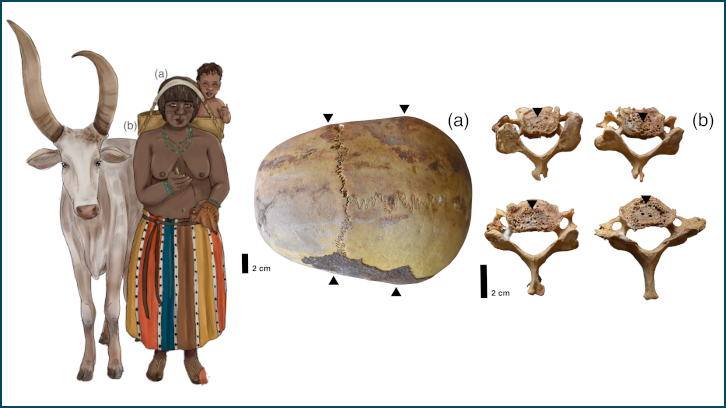Fossil ape tali tell their tale: A new fossil informs about hominoid locomotor evolution

A research article published in the American Journal of Biological Anthropology by an international team led by researchers from the Institut Català de Paleontologia Miquel Crusafont (ICP-CERCA) describes a new fossil ape talus from Abocador de Can Mata that offers valuable insight into the locomotor adaptations of Miocene hominoids.
Among other bones, the talus (ankle bone) is particularly informative about the locomotion of fossil primates due to its close association with foot function and substrate preference. Unfortunately, there are few fossil tali of fossil great apes, hindering our understanding of the locomotor adaptations of extinct members of this group. The recent description of the most complete talus of a dryopith ape (an extinct group of European great apes), from the Middle Miocene (11.7 Ma) of Abocador de Can Mata, has important implications for the evolution of locomotor behaviors in modern apes.
Figure 1. IPS85037, right dryopith talus from ACM/C8-B*, in dorsal (left) and distal (right) views. Scale bar equals 2 cm.
Like other dryopith skeletal remains, the new talus exhibits a mosaic of primitive (“monkey-like”) and derived (“ape-like”) features. It is unknown to which dryopith genus recorded at Abocador de Can Mata (Pierolapithecus, Anoiapithecus, or Dryopithecus) this talus belongs. However, with an estimated body mass of 38 kg (similar to a male bonobo or a female orangutan, and comparable to that of various dryopith species from NE Iberian Peninsula), it clearly belongs to a male dryopith individual.
The talus was compared with that of living simian primates and the stem ape Ekembo from the Early Miocene (18 Ma) using 3D geometric morphometrics, which enables quantifying the shape of anatomical elements and visualizing their morphological variation. Despite its more primitive appearance compared with that of extant apes, the talus from Abocador de Can Mata also shows remarkable similarities with those of orangutans and gibbons. In contrast, the tali of stem apes more closely resemble those of Old World monkeys. Inferences based on the talar shape indicate that the locomotor repertoire of the Abocador de Can Mata dryopith was dominated by upright arboreal behaviors (such as climbing and clambering), and, to a lesser extent, quadrupedalism, with limited below-branch suspensory behaviors. This repertoire would have resembled that of living howler monkeys and bonobos, rather than that of Ekembo, dominated by quadrupedalism as in extant New and Old World monkeys.
The locomotor repertoire suggested by the Abocador de Can Mata talus is consistent with previous locomotor inferences for the Middle Miocene dryopiths (12 Ma) Pierolapithecus and Dryopithecus, but contrasts with the greater emphasis on suspensory behaviors displayed by younger dryopiths such as Hispanopithecus (10 Ma). These findings add to a growing body of evidence suggesting that adaptations for vertical climbing and suspensory behaviors did not evolve at the same time, and that the latter most likely evolved independently in various hominoid lineages.
Institut Català de Paleontologia Miquel Crusafont (ICP-CERCA)
Universitat Autònoma de Barcelona
References
Monclús-Gonzalo, O.; Pal, S.; Püschel, T. A.; Urciuoli, A.; Vinuesa, V.; Robles, J. M.; Almécija, S. & Alba, D. M. (2025). A dryopithecine talus from Abocador de Can Mata (Vallès-Penedès Basin, NE Iberian Peninsula): Morphometric affinities and evolutionary implications for hominoid locomotion. American Journal of Biological Anthropology, 186, e70043. https://doi.org/10.1002/ajpa.70043


